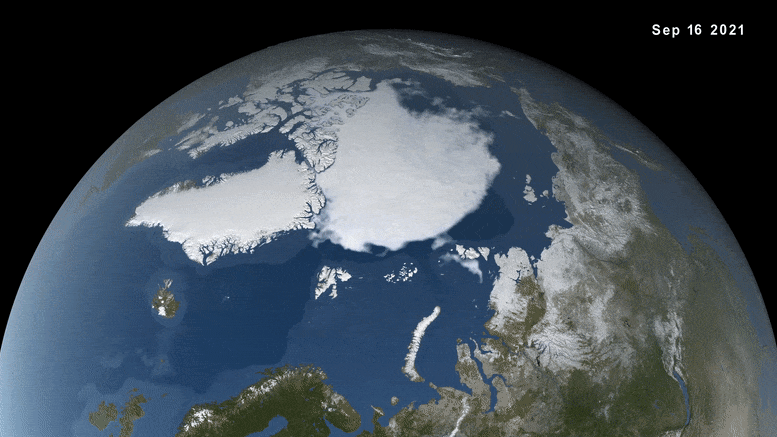
This image visualizes wintertime sea ice change in the Arctic using data provided by the Japan Aerospace Exploration Agency’s Global Change Observation Mission 1st-Water “SHIZUKU” satellite, which is part of a NASA-led partnership to operate several Earth-observing satellites. See the full video in the article below. Credit: NASA’s Scientific Visualization Studio
Arctic sea ice appeared to have hit its annual maximum extent on February 25 after growing through the fall and winter. This year’s wintertime extent is the 10th-lowest in the satellite record maintained by the National Snow and Ice Data Center, one of NASA’s Distributed Active Archive Centers.
Arctic sea ice extent peaked at 5.75 million square miles (14.88 million square kilometers) and is roughly 297,300 square miles (770,000 square kilometers) below the 1981-2010 average maximum – equivalent to missing an area of ice slightly larger than Texas and Maine combined. This maximum ties with 2015 as the third earliest on record.
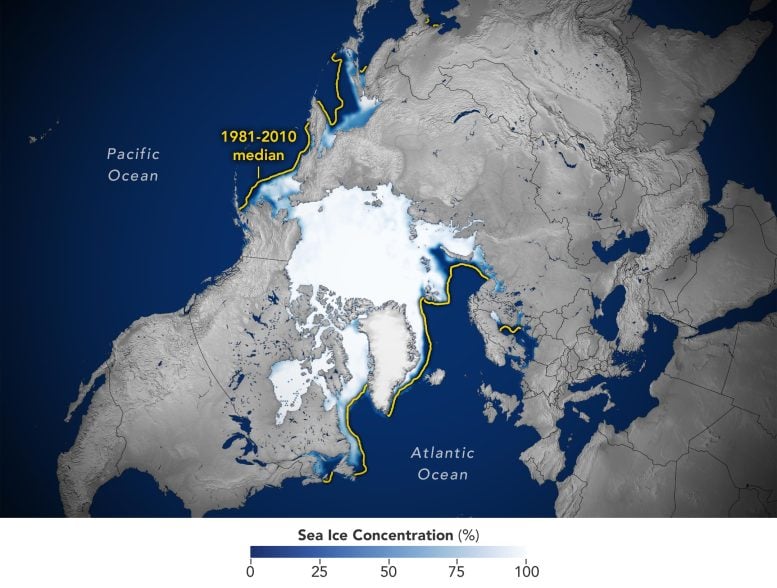
This image shows the average concentration of Arctic sea ice on February 25, 2022. The yellow outline shows the median sea ice extent for the month of March, when the ice generally reaches its maximum extent, as observed by satellites from 1981 to 2010. A median is the middle value. That is, half of the extents were larger than the line, and half were smaller. Credit: Joshua Stevens/NASA Earth Observatory
Sea ice waxes and wanes with the seasons every year. In the Arctic, it reaches its maximum extent around March after growing through the colder months, and shrinks to its minimum extent in September after melting through the warmer months. In the Southern Hemisphere, Antarctic sea ice follows an opposite cycle.
To estimate sea ice extent, satellite sensors gather sea ice data that are processed into daily images, each image grid cell spanning an area of roughly 15 miles by 15 miles (25 kilometers by 25 kilometers). Scientists then use these images to estimate the extent of the ocean where sea ice covers at least 15% of the water.
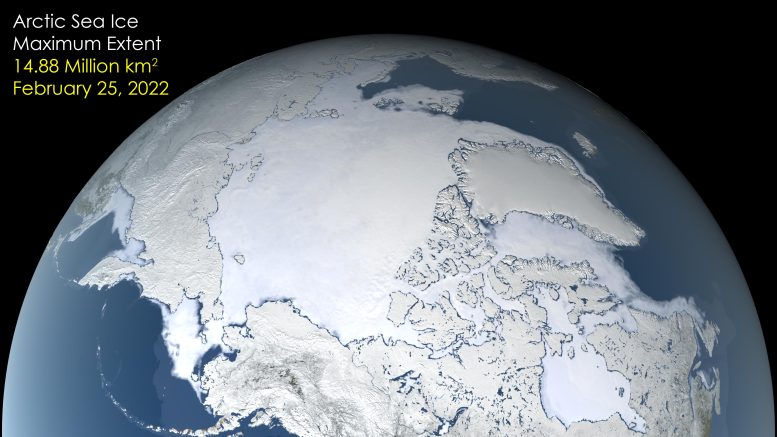
After growing through the fall and winter, sea ice in the Arctic appears to have reached its annual maximum extent. The image above shows the ice extent—defined as the total area in which the ice concentration is at least 15 percent—at its 2022 maximum, which occurred on February 25, tying with 2015 for the third earliest maximum on record. On this day the extent of the Arctic sea ice cover peaked at 14.88 million square kilometers (5.75 million square miles), making it the tenth lowest yearly maximum extent on record. Credit: NASA’s Scientific Visualization Studio
Since satellites began reliably tracking sea ice in 1979, maximum extents in the Arctic have declined at a pace of about 13% per decade, with minimum extents declining at about 2.7% per decade. These trends are linked to warming caused by human activities such as emitting carbon dioxide, which traps heat in the atmosphere and causes temperatures to rise. NASA’s analysis also shows the Arctic is warming about three times faster than other regions.
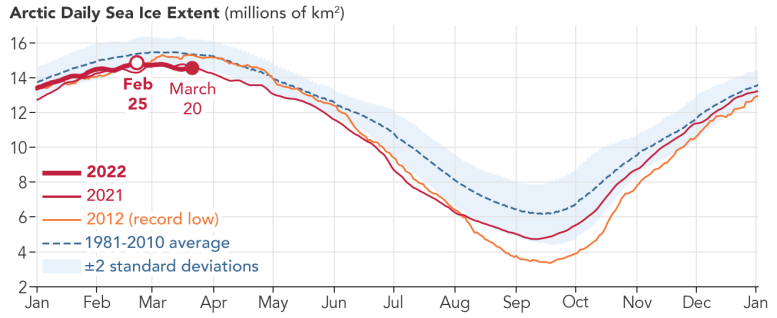
This graph shows Arctic daily sea ice extent in 2022, 2021, and 2012 compared to the 1981-2010 average. This year’s annual maximum extent was reached on February 25. Credit: Joshua Stevens/NASA Earth Observatory
This February, Antarctic sea ice dropped to a record-low minimum extent. But unlike in the Arctic, this sea ice has shown irregular ups and downs mainly because of the geographical features that surround it. Winds and ocean currents specifically linked to the Southern Ocean and Antarctica have a strong influence on sea ice extent.
Sea ice in the Arctic is surrounded by land, whereas sea ice in the Antarctic is surrounded only by ocean and can thus spread out more freely. Overall, the Antarctic sea ice record shows a slightly upward – but nearly flat – trend or increase.
Gains in Antarctic sea ice are not large enough to offset the losses of the Arctic. The ice in both regions helps regulate global temperatures. Even if Antarctic gains balanced sea ice levels globally, Arctic sea ice losses could still contribute to further regional and global warming.

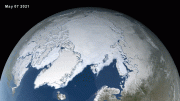

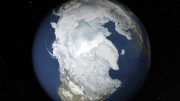

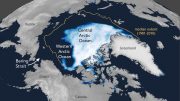
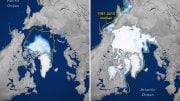
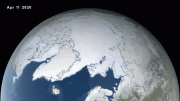
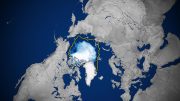
“This year’s wintertime extent is the 10th-lowest …”
I guess we can conclude that because it isn’t a new record low, the situation isn’t getting worse. Maybe that has something to do with the fact that there has been no statistically significant warming for over 7 years.
Unlike the annual low, which set a record in 2012, there isn’t much variation in the annual high. The Earth, particularly the Arctic, is warming long-term. In fact, it has been warmer on average since the end of the last glaciation 12,000 years ago. Perhaps we are trying to read too much into the changes in Arctic ice coverage.
Clyde, it is impossible to read too much into any indicator of global warming. Check out the comments on these AGW stories. It’s clear the public are suitably terrified of an imminent end to human life on Earth — some say we have only five years left, although I doubt any on these folks would put real money down on that proposition. (If they would, I would gladly take the other side of that bet.)
The important thing is people were just about willing to accept carbon taxes to avert the catastrophe but then Putin set things back by making hypothetical high energy costs real ones.
I check out the Danish portal on ice levels in Greenland, daily. My students and fellow teachers all think that ice levels in Greenland are dropping…because that is what the news implies. There appears to be NO danger of that. They’re quite a bit higher than the thirty year average right now, still gaining at a time when they’re normally melting quickly. Why doesn’t the news cover this?